- Best in class quality
- Loaded with equipment
- Fabulous attention to detail
- Old engine isn't that frugal
- Ride needs tuning
- Not very spacious
In 2019, Mazda launched the fourth generation ‘BP’ series Mazda3. The latest in a long line of successful Mazda small cars, the new model ushered in a new sense of style, a more luxurious interior and more standard kit than ever before. Inevitably, it also costs a lot more than previous models, so to find out successful the new ‘Mazda premium’ brand attitude has become, we tested the 2020 Mazda3 G25 Astina.
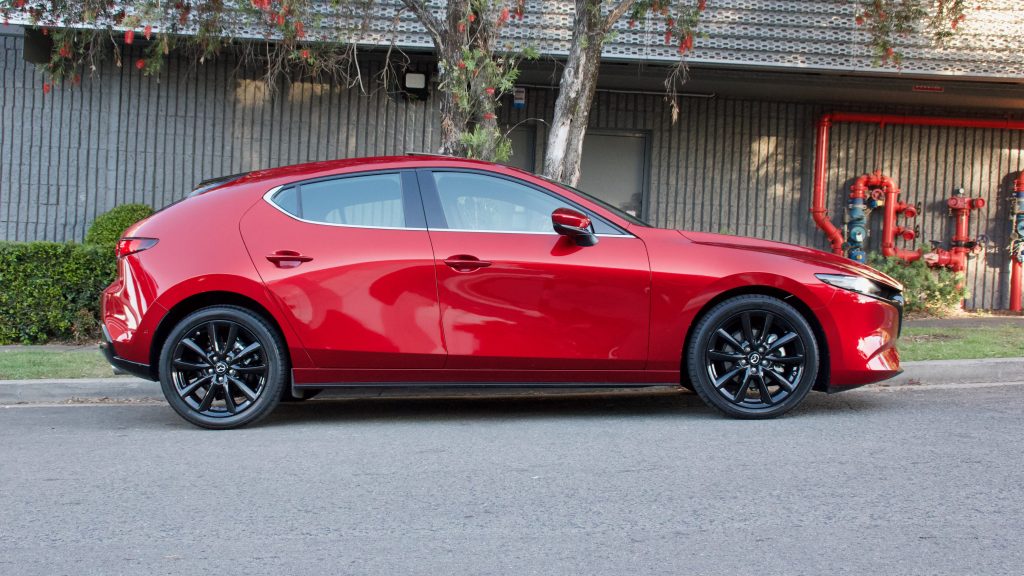
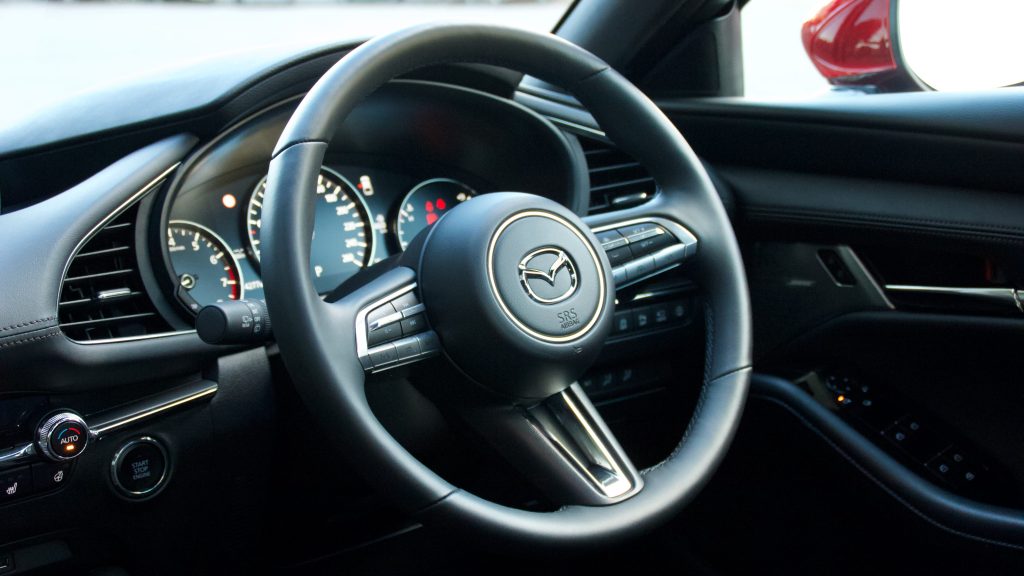
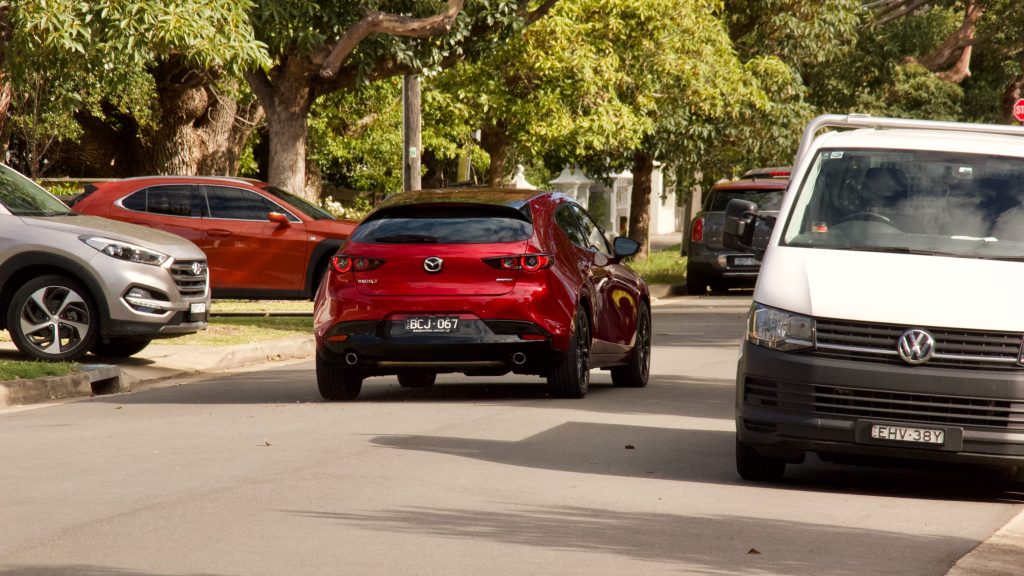
The Mazda3 sits below the CX-30 small SUV in the Mazda lineup, though they use the same platform. The current Mazda3 was the first Mazda to debut this platform, as well as the brand’s new Mazda Connect infotainment system and even the new SkyActiv-X engine. In a lot of ways, the new Mazda3 is a pioneer for the Japanese brand.
Price & Specs: 7/10
Although prices rose compared with the previous generation model, all variants of the Mazda3 range are very well equipped, even the entry level G20 Pure. We tested the opposite end of the spectrum: the $38,590 plus on-road costs (around $43,000 drive away) G25 Astina auto hatch.
The G25 Astina is fully loaded: there’s LED lighting, 18-inch wheels, dual-zone climate control with rear air vents, leather upholstery, a 12-way electrically adjustable driver’s seat with memory settings, heated front seats and a heated steering wheel, heated/auto-dimming/auto-folding and auto-dipping mirrors, an 8.8-inch centre screen with Apple CarPlay and Android Auto, inbuilt navigation, digital radio, a colour heads-up display, a 12-speaker Bose sound system, a sunroof and keyless entry and start.
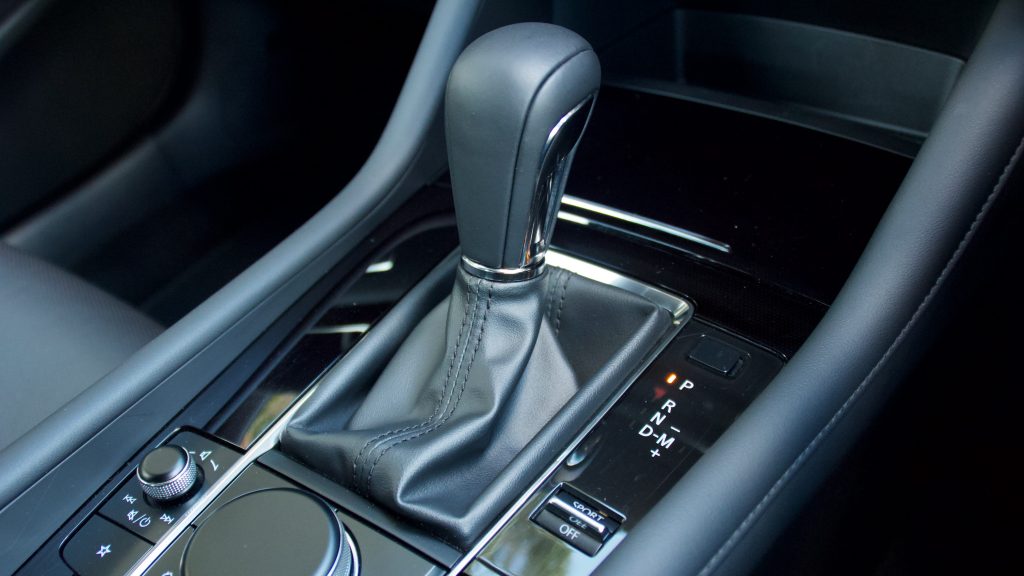
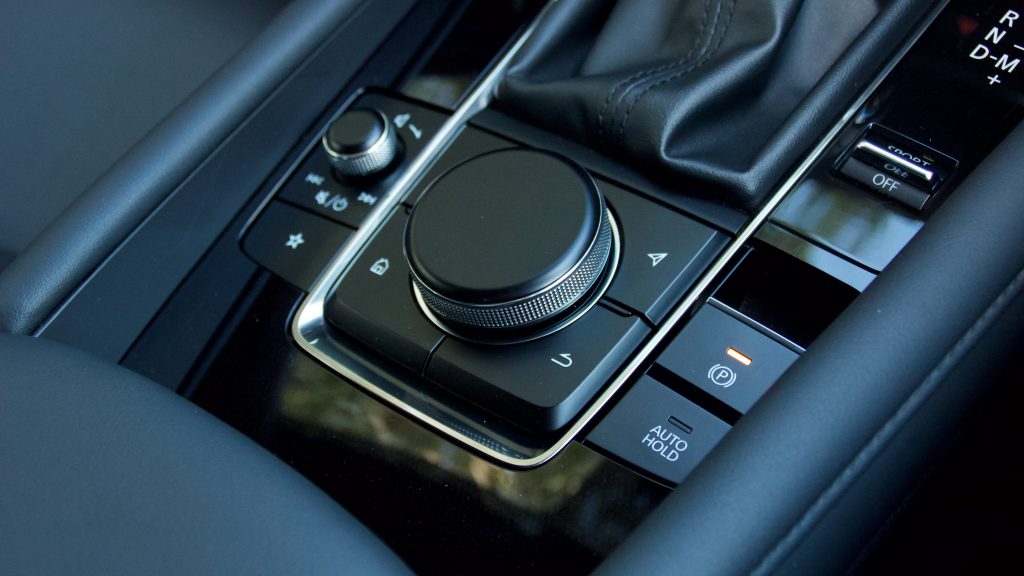
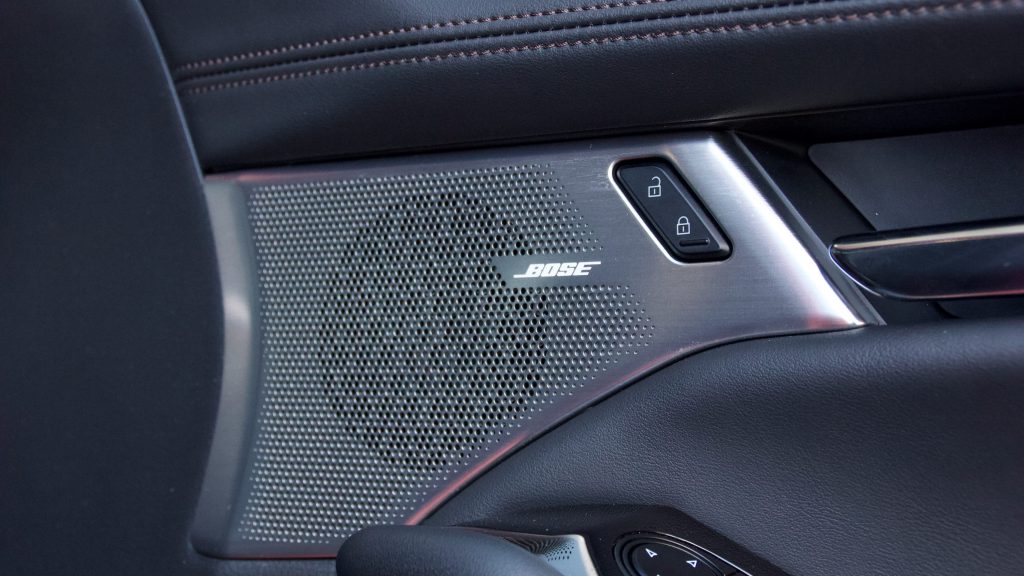
Standard safety kit is best-in-class with seven airbags, low- and high-speed automatic emergency braking (AEB) with pedestrian detection, adaptive cruise control with stop and go functionality, blind-spot monitoring with front and rear cross-traffic alert, automatic reverse braking, lane keep assist with lane departure warning, a 360-degree parking camera, driver monitoring, Matrix headlights that shield their light from oncoming objects, front and rear parking sensors, auto wipers and even auto lights that cannot be switched off in the dark – Mazda knows its market well!
The Astina doesn’t have any optional extras aside from $495 ‘Soul Red Crystal’, ‘Polymetal Grey’ and ‘Machine Grey’ paintwork – ours was painted in the gorgeous red, which really sets off the stunning lines of the car. All other colours are free-of-charge, which include ‘Deep Crystal Blue’, ‘Sonic Silver’, ‘Titanium Flash’, ‘Jet Black’ and ‘Snowflake White’. Black leather is standard on all colours, but red leather is available on darker hues.
If you don’t need the extra features of the Astina, we think better value exists lower in the 3 range…
The 3 Astina is not cheap, and it sits half-way between cars like the $34,990 Volkswagen Golf Highline and $34,490 Ford Focus Titanium and the $45,100 Mercedes-Benz A180 and the $45,990 BMW 118i, but it’s better equipped than all of them. If you don’t need the extra features of the Astina, we think better value exists lower in the 3 range – the G25 GT is comfortably less expensive than the Astina, though it still gets the majority of its equipment and crucially, the same luxury feel.
Performance & Fuel Economy: 7/10
Under the bonnet of the 2020 Mazda3 G25 Astina is Mazda’s ubiquitous 139kW/252Nm 2.5-litre four-cylinder petrol engine, in this case matched to a six-speed auto – a six-speed manual is also available (thank you Mazda!). This engine has seen duty in a variety of Mazda products since the arrival of the current generation Mazda6 in 2012, so it’s not exactly new. But in an age of downsizing and turbocharging, a 2.5-litre naturally aspirated engine in a small hatch like the 3 is unusual.
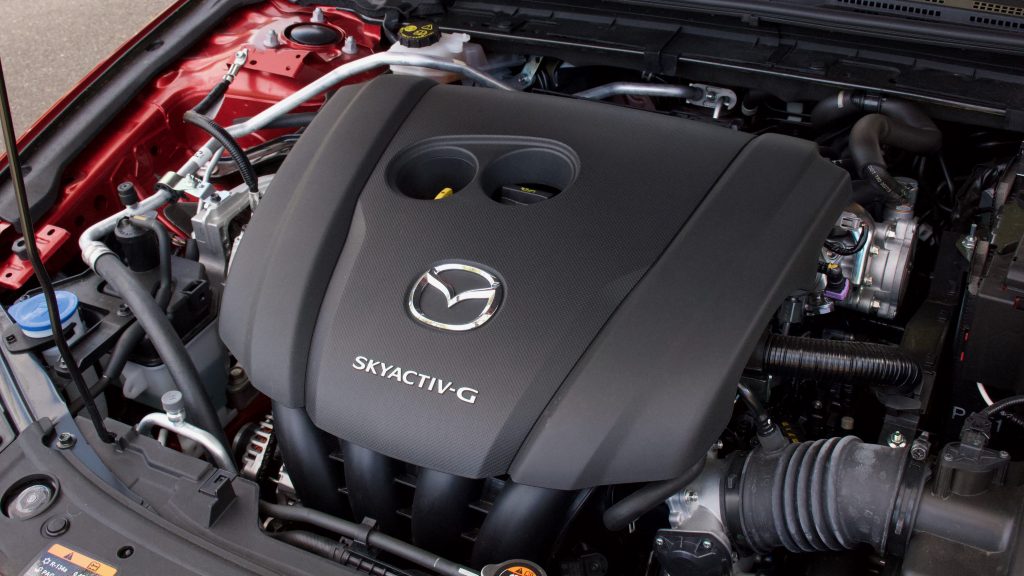
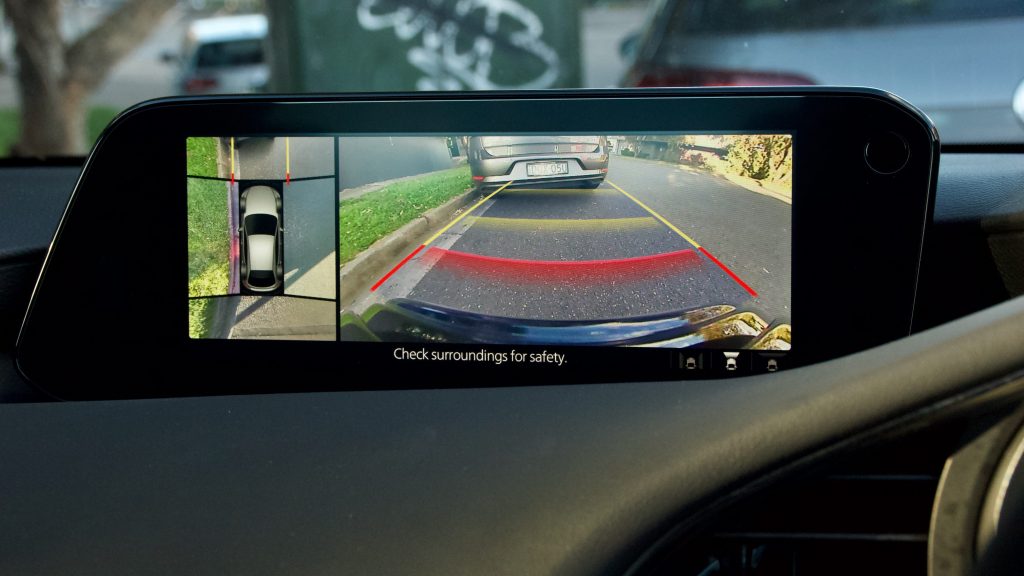
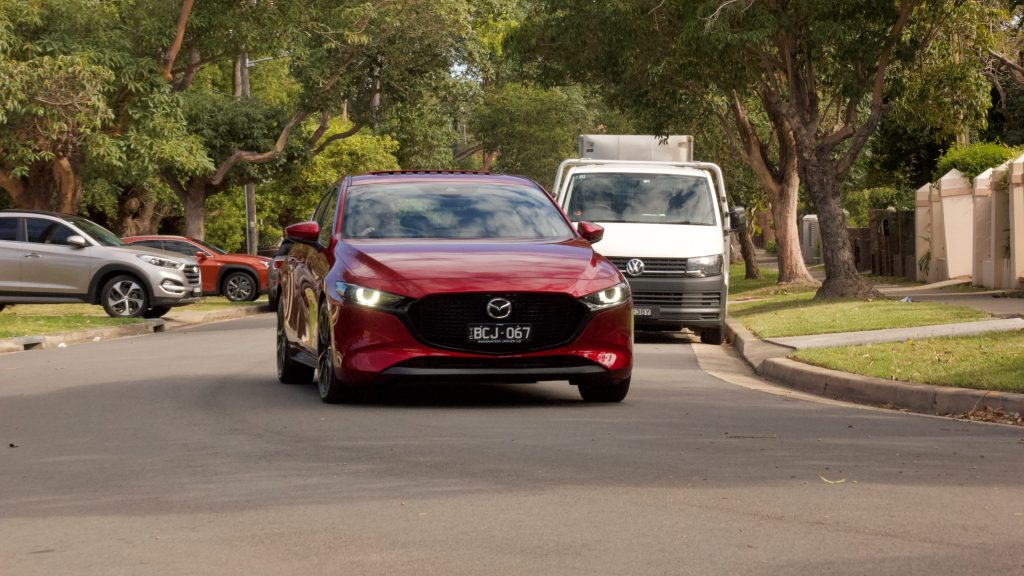
It’s seen several revisions since it was released, including the addition of cylinder deactivation tech to save fuel, but the 2.5-litre engine is very similar to the one that debuted all those years ago. In truth, it’s totally fine for normal use – the full 250Nm is developed low in the rev range so you don’t have to rev it to get moving, and it does like a rev if you feel the need to push the accelerator pedal. It’s just not the nicest sounding engine, and it’s not particularly fast either – the 0-100km/h sprint is dealt with in around 8.0 seconds.
Unlike its turbocharged rivals, it’s quite a linear engine and it will happily drink 91RON fuel. The six-speed torque converter auto is very responsive and intuitive, with none of the low-speed jerkiness of a dual-clutch unit – we just wish it had a few more ratios to help both acceleration and fuel economy. With a quieter and better engine, as well as more ratios, the new Mazda3 would certainly exhibit a more premium driving experience.
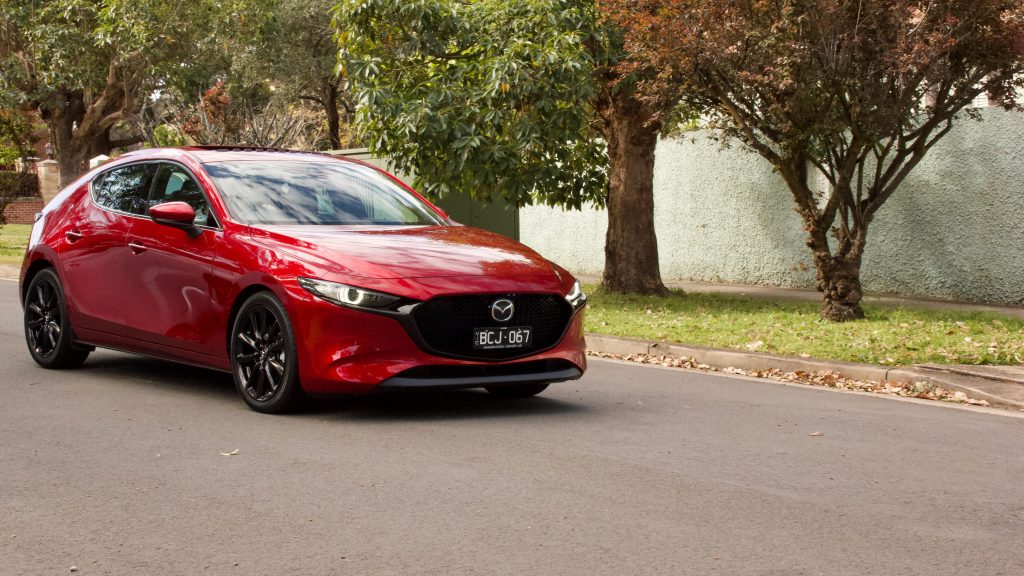
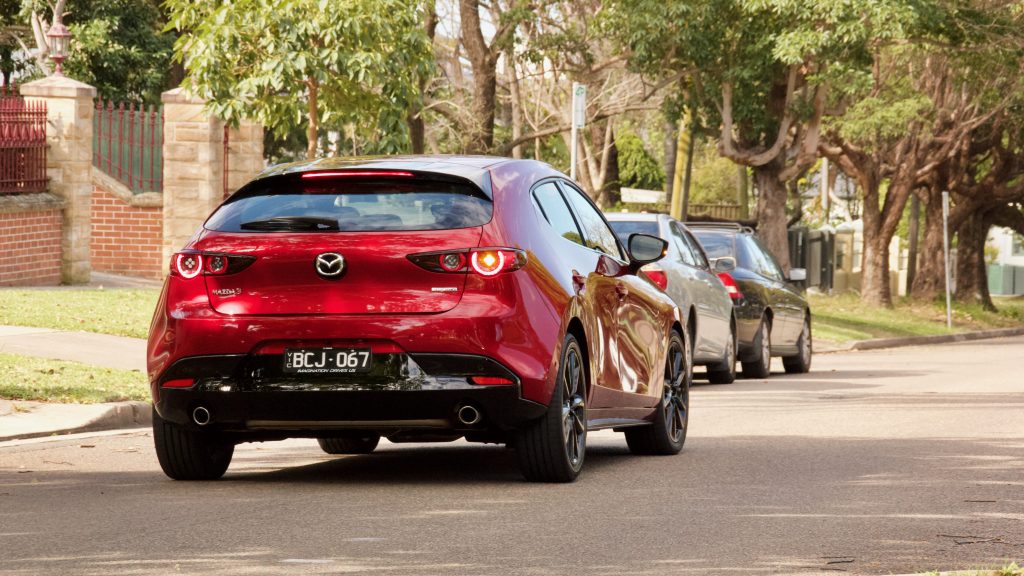
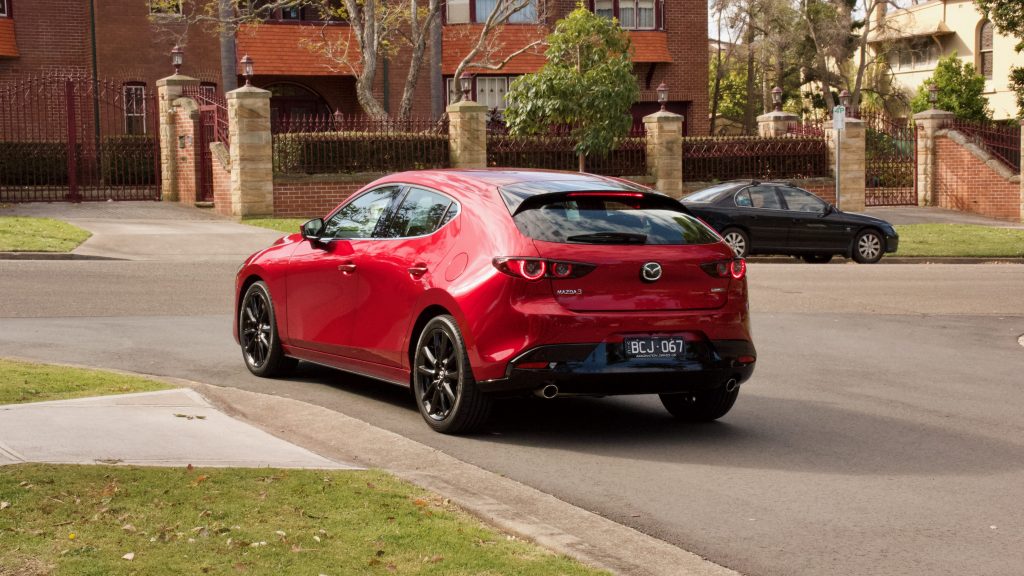
In our experience, the Mazda3 2.5-litre is not that fuel efficient in day-to-day driving either. Mazda claims it will use 6.6L/100km but in our testing that skewed heavily towards urban driving, we recorded 9.4L/100km. Highway and country driving will give consumption of below 6.5L/100km, but we can’t wait to sample the new SkyActiv-X mild-hybrid drivetrain in the Mazda3, which has just been released in Australia.
Ride & Handling: 8/10
The ‘BP’ series Mazda3 ushered in a new platform for the brand, which also underpins the CX-30 SUV (so far). It’s available with all-wheel drive in overseas markets but Australian models are purely front-wheel drive – presumably so the few who wanted an AWD 3 would just buy a more expensive CX-30. The new platform brings a stronger shell, which helps safety, and makes the car feel more substantial than before – though strangely, the previous car’s independent rear suspension set up was ditched for a simpler torsion beam set up.
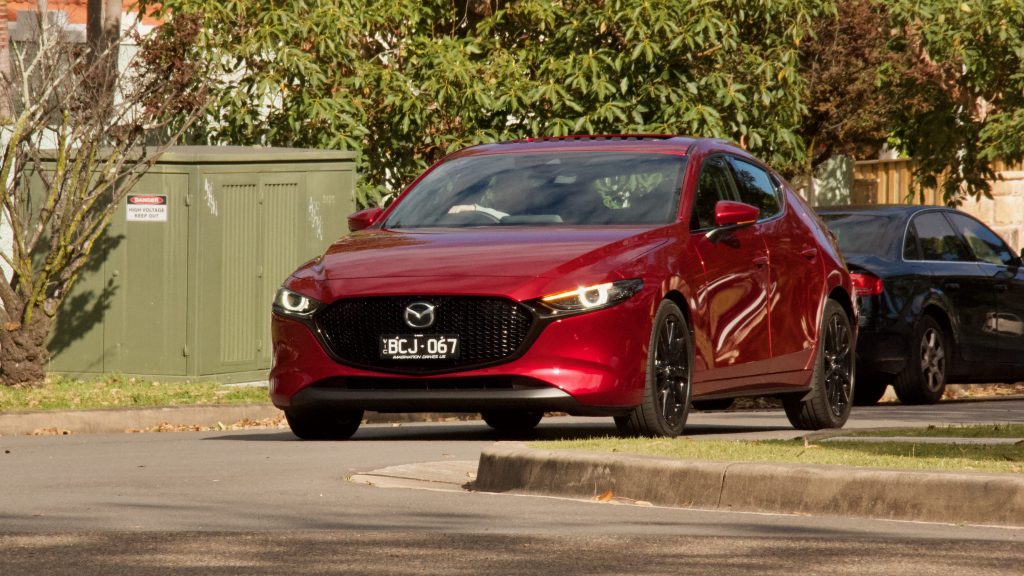
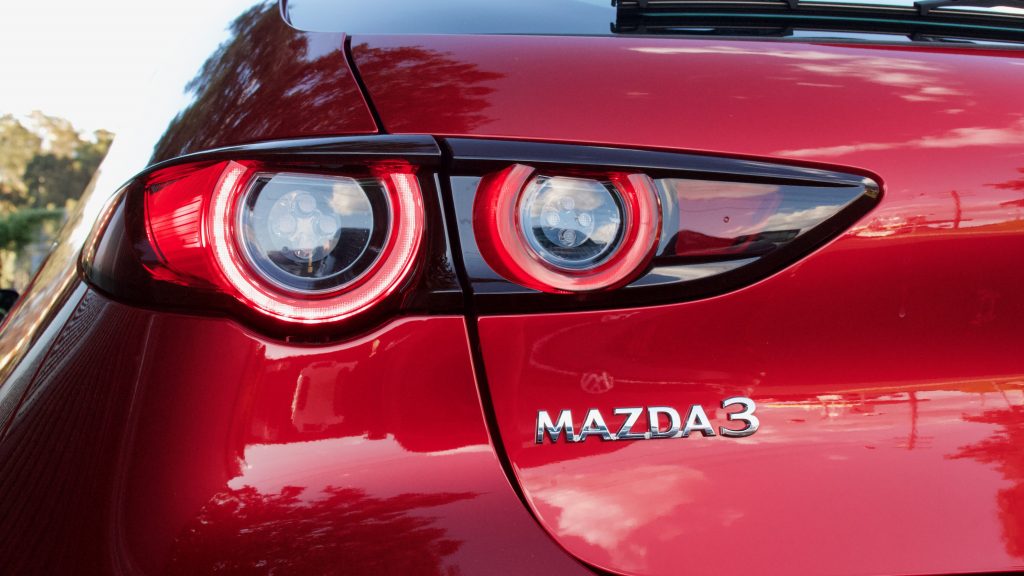
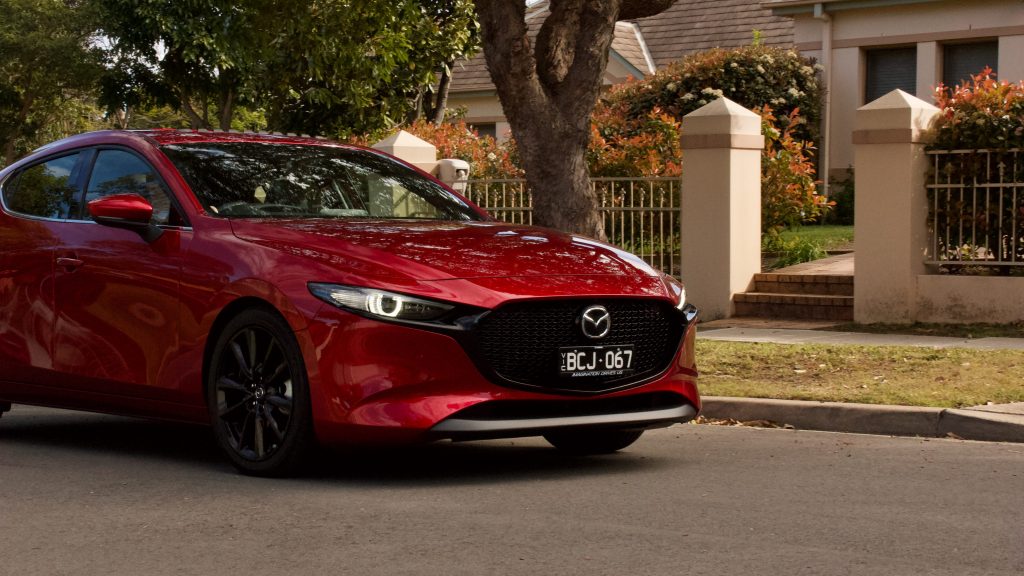
Now for regular people, a torsion beam suspension system means that the rear wheels are joined by one bar and what one wheel does, the other does as well. For many, this won’t mean much but for enthusiasts, it’s annoying as the handling isn’t as sharp as the previous model, and the ride quality has suffered as well. Of course, the French car makers love a torsion beam rear end and have learned how to master tuning them, but Mazda’s effort feels slightly unrefined and needs more tuning in our opinion.
While the suspension is a step back from the previous model, the new 3 is still a fun car to drive. The steering is quick and accurate, and combined with its keen turn in and overall dartiness, the 3 loves a back road punt. The brake pedal is slightly wooden in feel, but it’s otherwise goof fun.
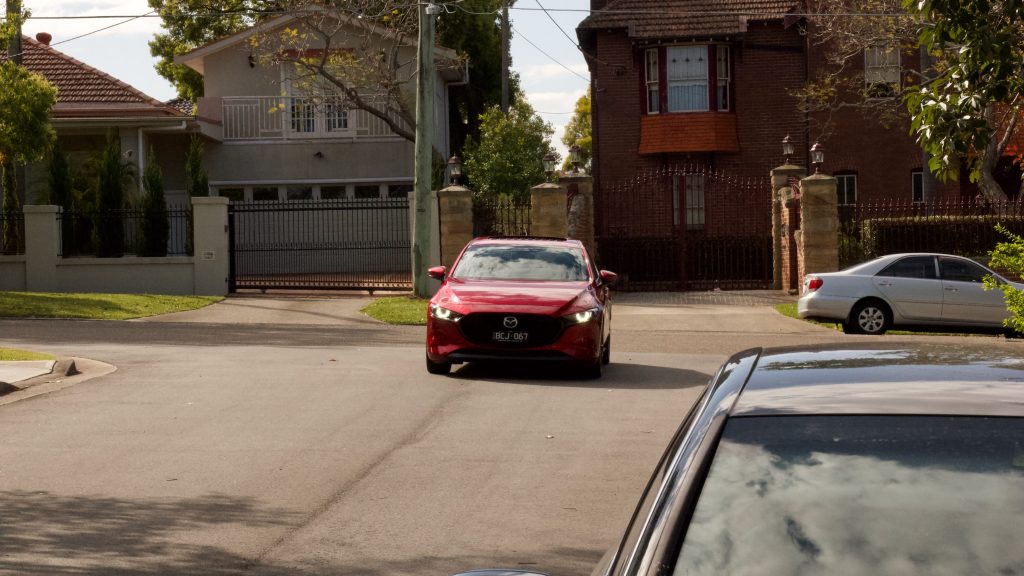
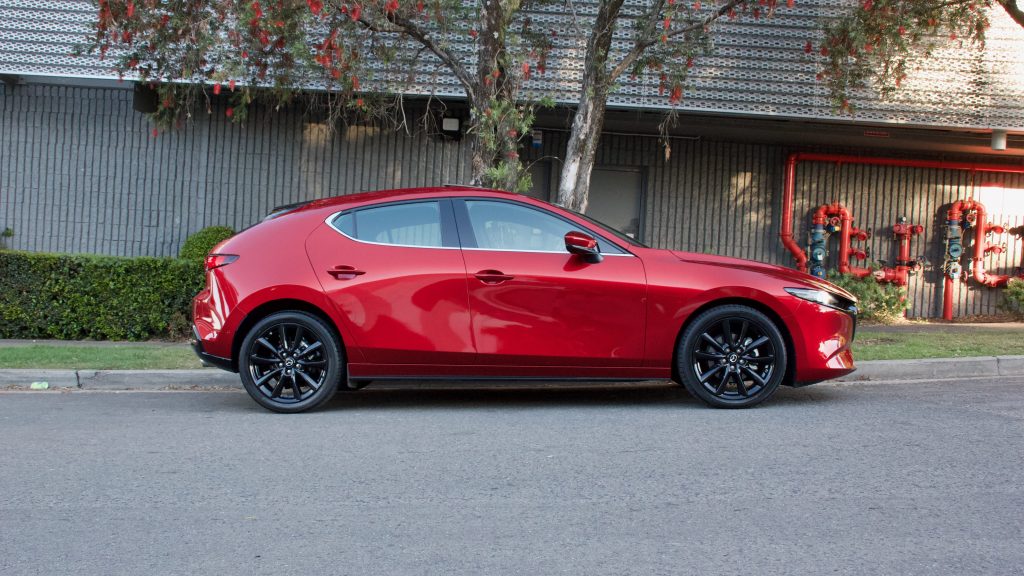
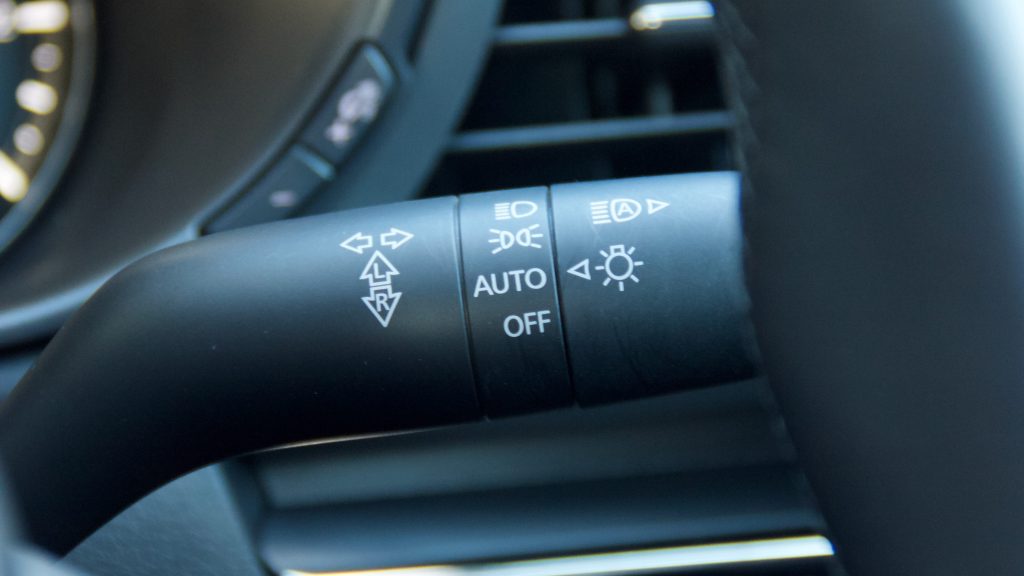
Yet according to Mazda, the torsion beam rear end helps refinement and it’s true, there have been significant refinement improvements with the new model. Put simply, it’s the quietest in class for road noise and at highway speed, it’s properly luxurious. Pump the standard Bose sound system and it’s a serene driving experience – only the lacklustre rear ¾ vision detracts from it.
Interior & Practicality: 9/10
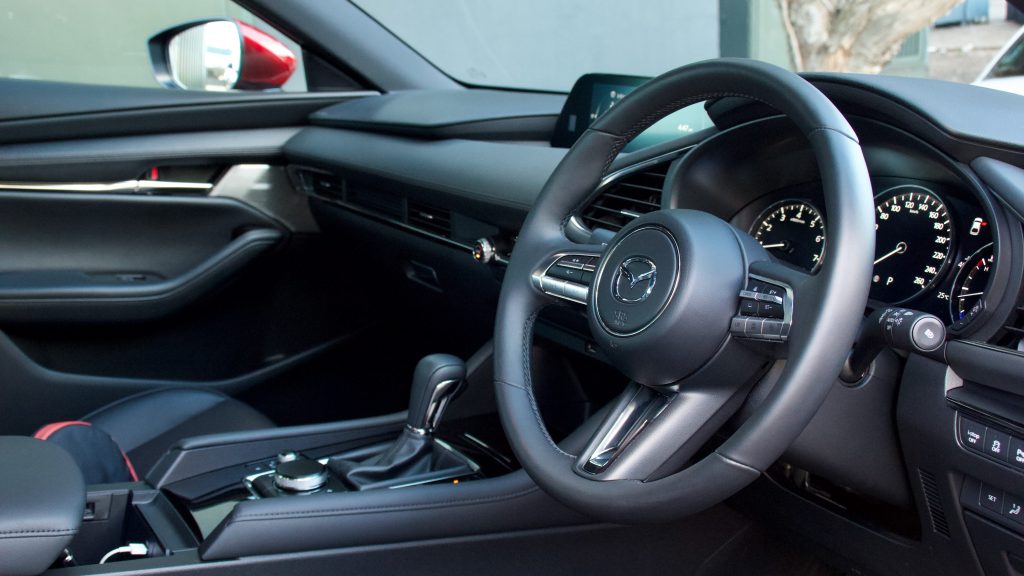
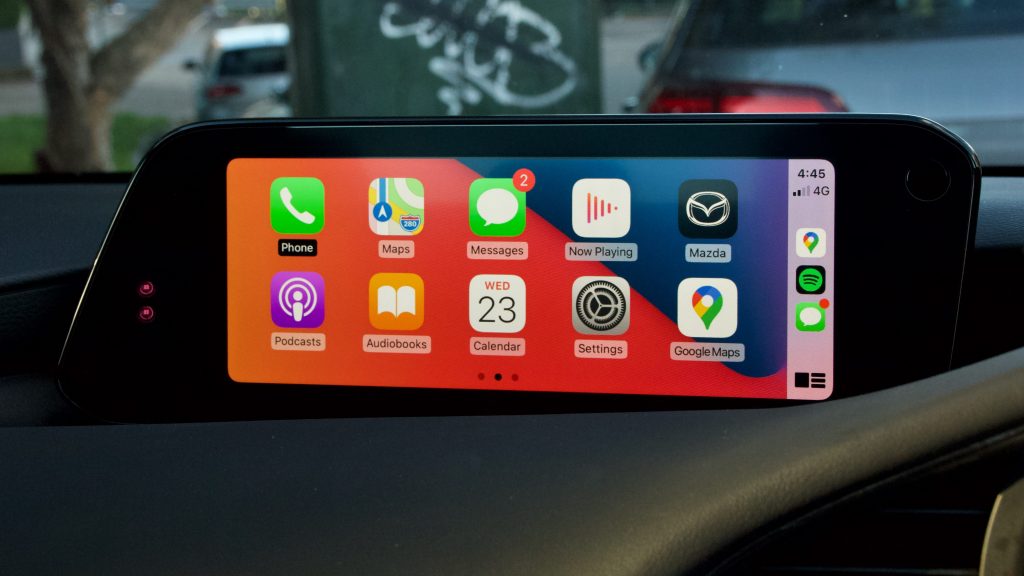

While the 2020 Mazda3 G25 Astina doesn’t move the segment forward with its dynamics, it certainly does with its interior quality and presentation. Here’s another best in class effort for Mazda – the 3’s interior kicks the butt of cars costing double or even thrice its asking price. The design is interesting, the materials are top notch and the practicality is reasonable as well.
Soft touch materials cover the dashboard, doors and centre console so that finding a genuinely hard piece of trim takes time. The leather on the steering wheel and seats is also first rate – a big improvement on the brand’s leather from even two years ago. Mazda’s strong attention to detail appears everywhere, even down to that all the buttons require the same amount of effort to use. It’s fantastic!
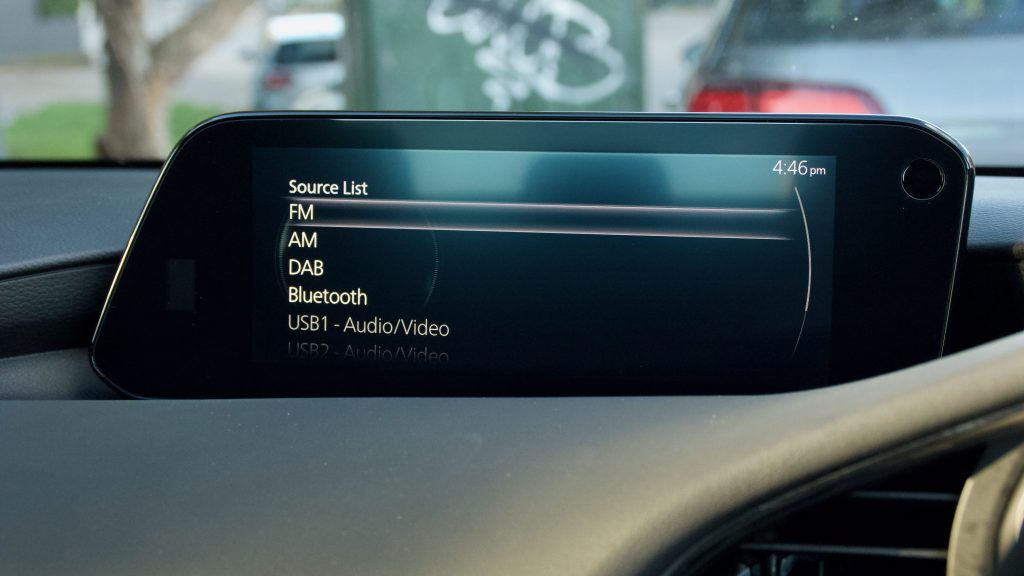
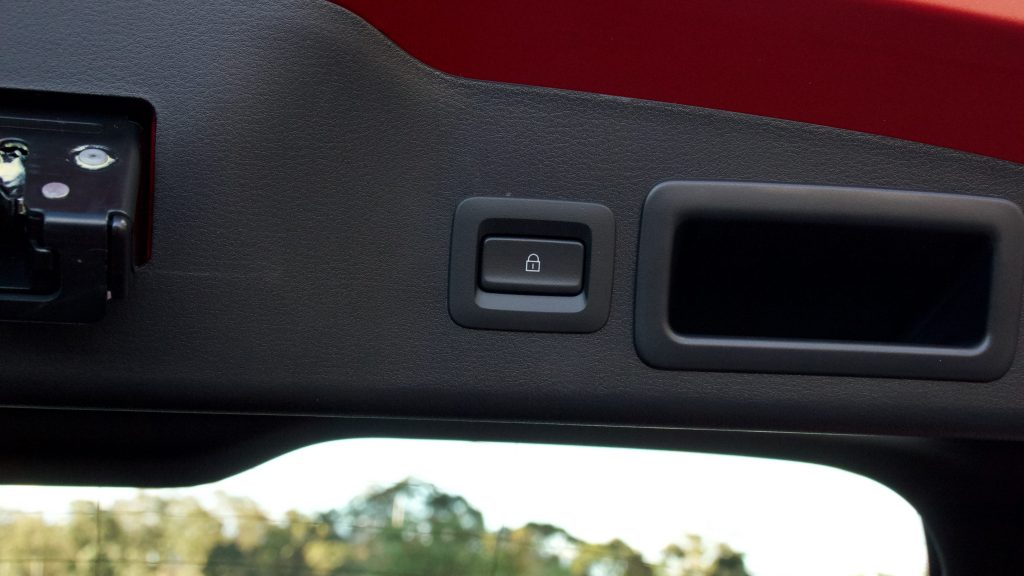
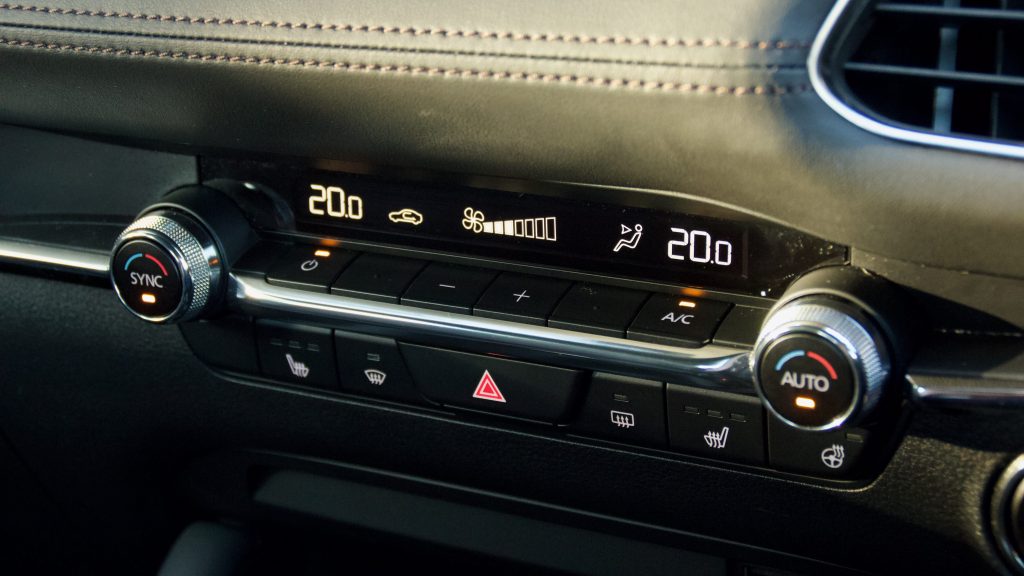
Centre of the 3’s cabin is a new 8.8-inch infotainment screen that’s controlled by a knob between the front seats – unlike the previous model, it’s not a touchscreen. While that would bother some people, we think it’s better as it means that your eyes are on the road more while driving. The system is feature packed with Apple CarPlay, Android Auto, inbuilt nav (though without live traffic), digital radio and even a 360-degree parking camera, and once you’ve gotten used to it, it’s very easy to use. The graphics used are classy and the screen resolution itself is excellent.
There’s ample storage space for your trinkets – the door bins are reasonably sized, the centre console bin is huge and features multiple fast charging USB ports and there’s even a tray ahead of the cupholders under the dashboard. It would be nice to see the wireless phone charger you can get in overseas models, which fits into the centre console bin. Rear seat features are fine for the segment – you get an arm rest with cupholders and vents, though it would be nice to see some charging ports as well.
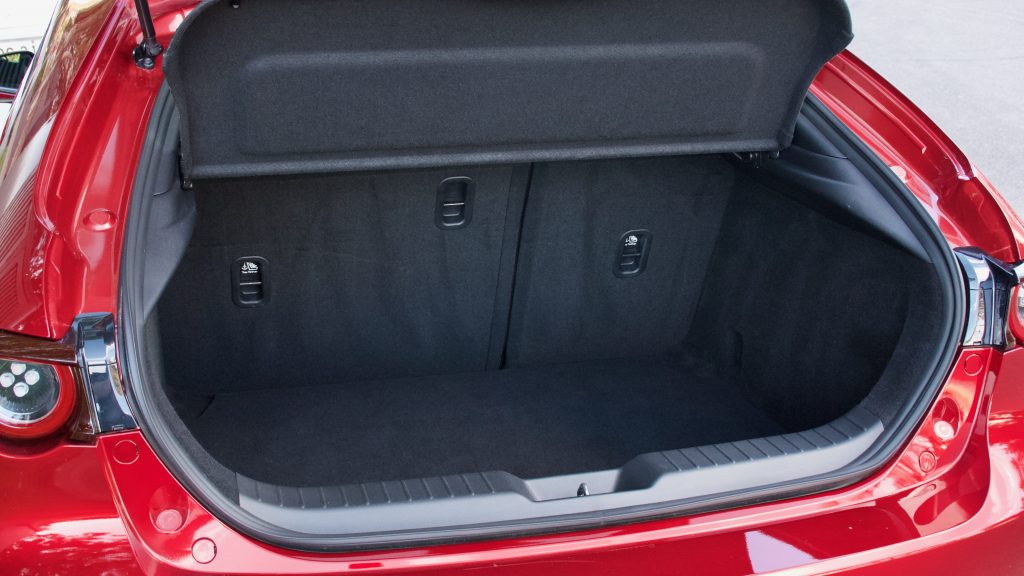
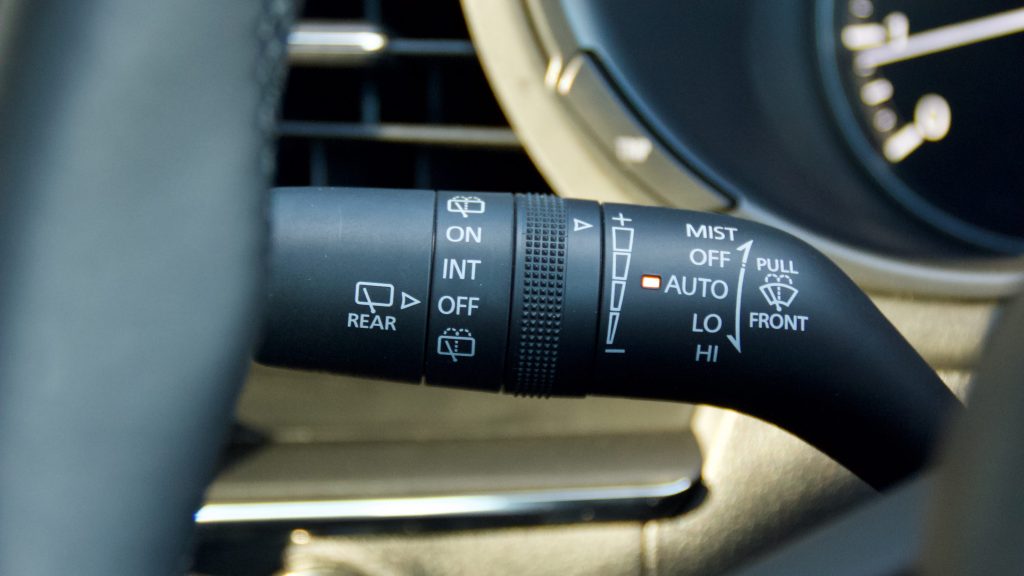
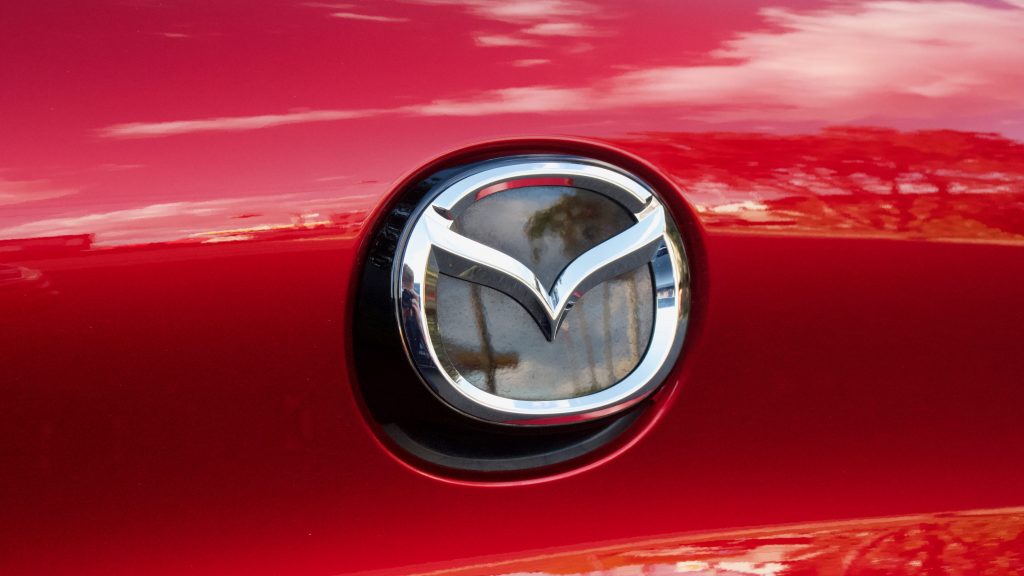
Having said that, roominess is not the Mazda3’s strong suit. Rear space is not massive for six-footers such as me, especially in terms of headroom, though legroom is fine. The windows are a bit small too, so if you’re considering carrying people in the back, try the larger and more practical sedan. The 3’s boot is also not massive either – just 295L of space is available with the seats up, which is less than the 307L space of the (shorter) previous model and way short of the 467L Skoda Scala. It’s not as small as it seems in real life though and it’s very nicely finished, though it would be nice to see some hooks to hang shopping bags off. Folding the seats is a simple affair, and they fold flat too.
Service & Warranty: 8/10
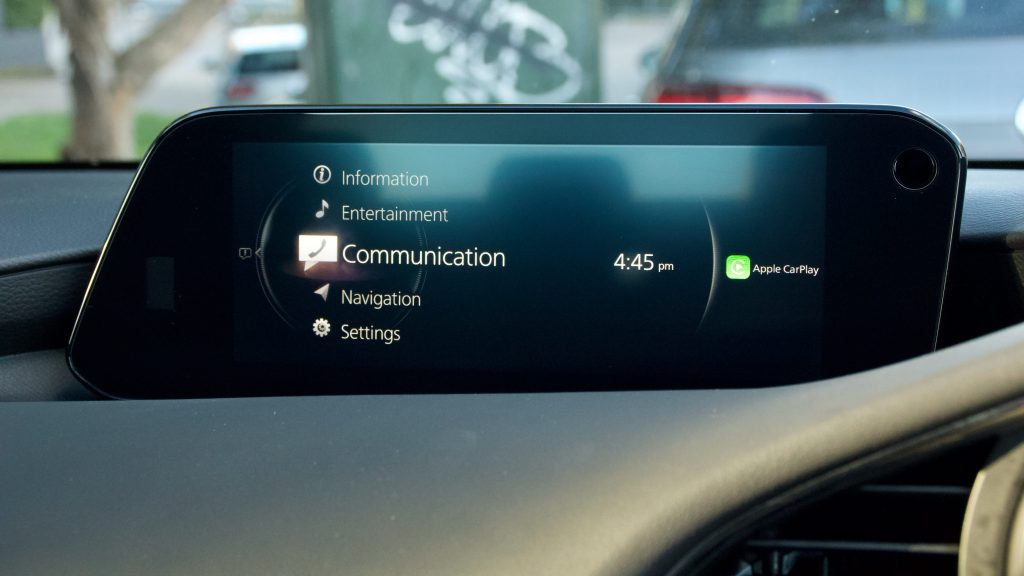
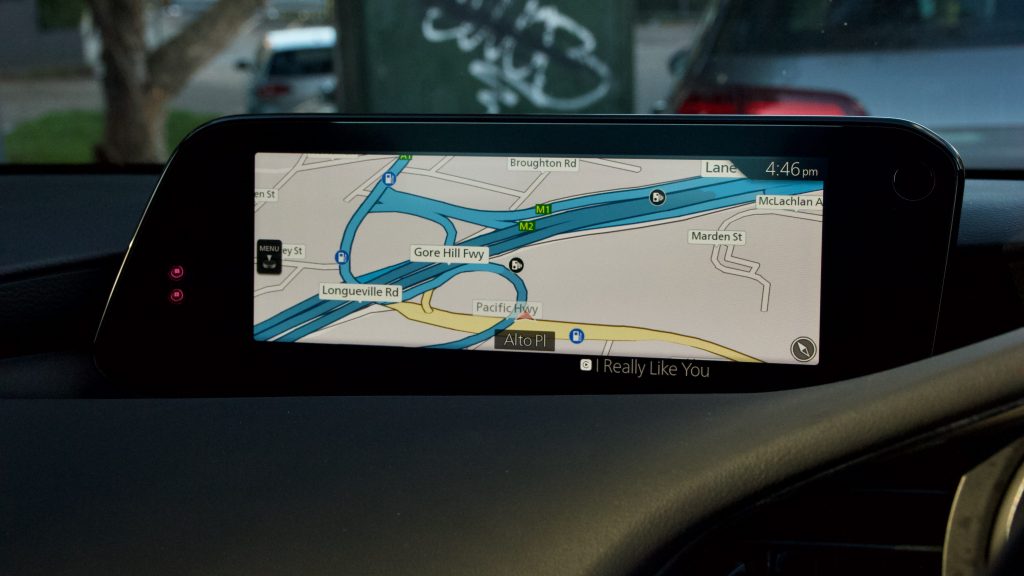
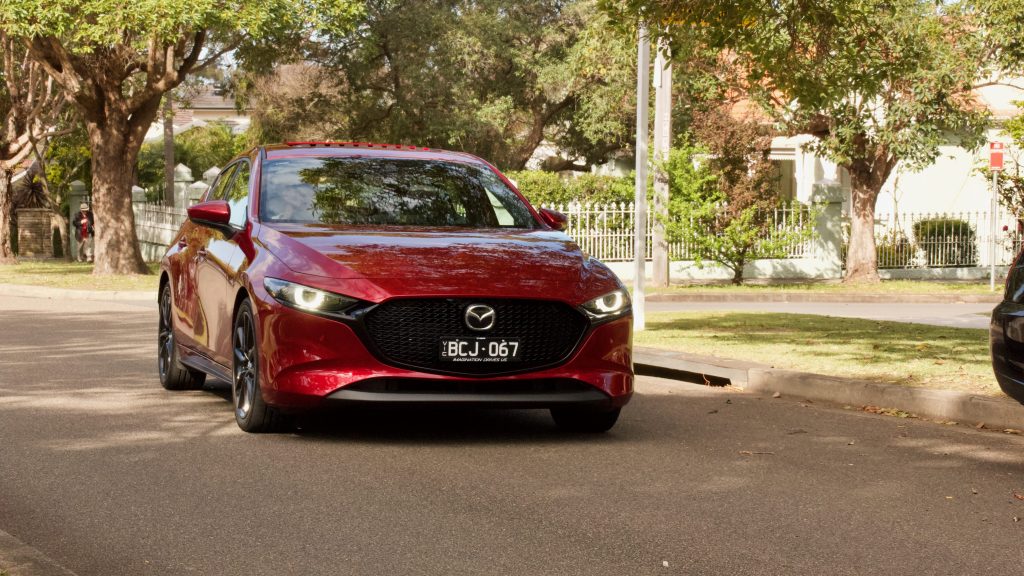
Like all new Mazdas, the 3 comes with a five-year/unlimited km warranty with five years of roadside assistance. Servicing the Mazda3 G25 Astina over five years costs $1,934 (or $387 per service) – bear in mind if you travel more than 10,000km per year, this will increase to around $2,691 by the time 70,000km comes around.
A Volkswagen Golf 110TSI Highline costs $2,392 over five years ($478 per service) but that’s to 75,000km – a Ford Focus Titanium serviced over five years/75,000km costs $1,811 ($363 per service).
The 2020 Mazda3 G25 Astina DiscoverAuto Rating: 7.8/10
The 2020 Mazda3 G25 Astina is an excellent effort from a company that’s tiny on a global scale compared to Ford, Toyota and VW. The attention to detail is what we love most about the new 3, from the satisfying button click everywhere in the cabin to the wiper stalks incorporating the front windshield washers, the new generation 3 is a home run for design.
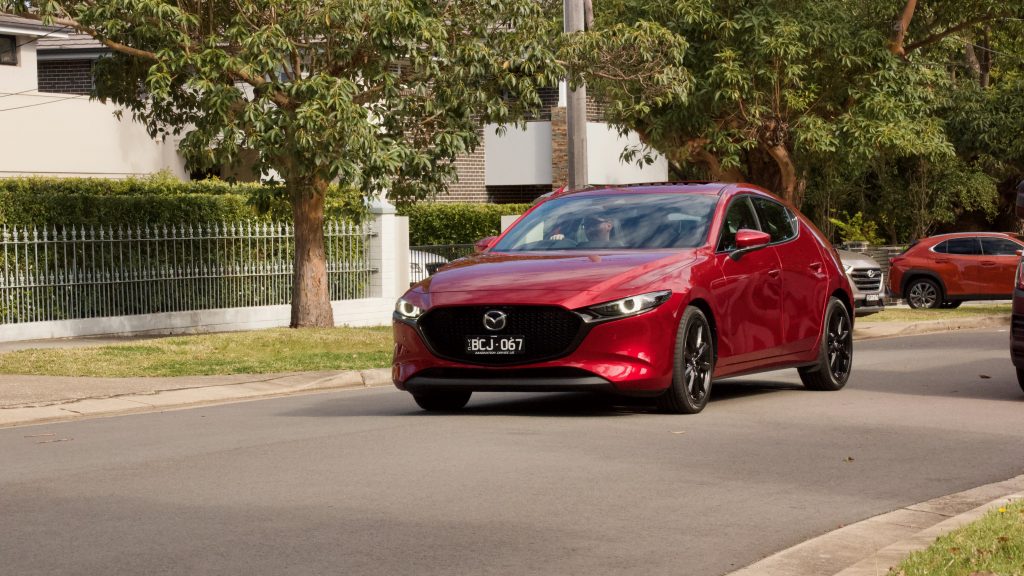
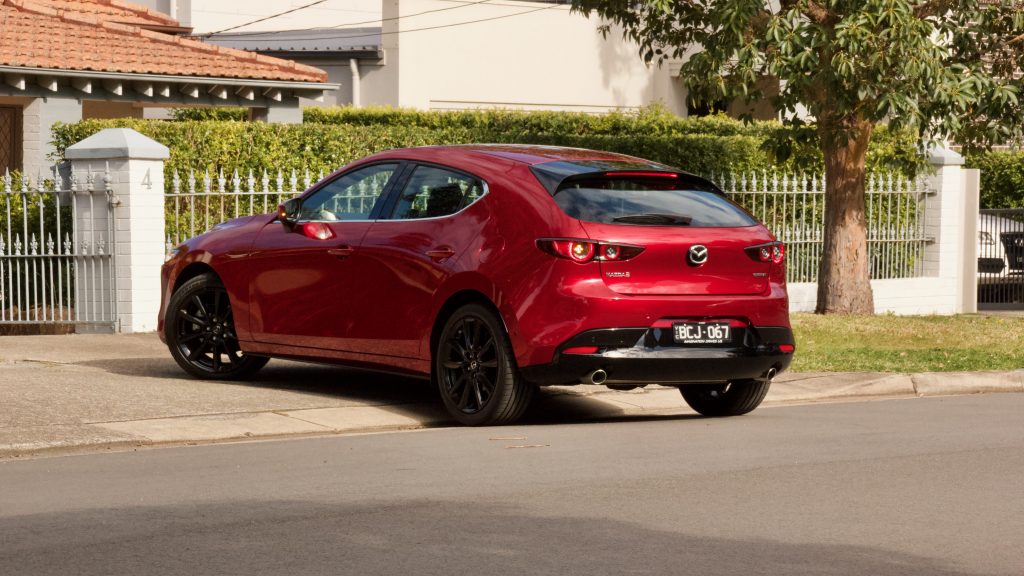
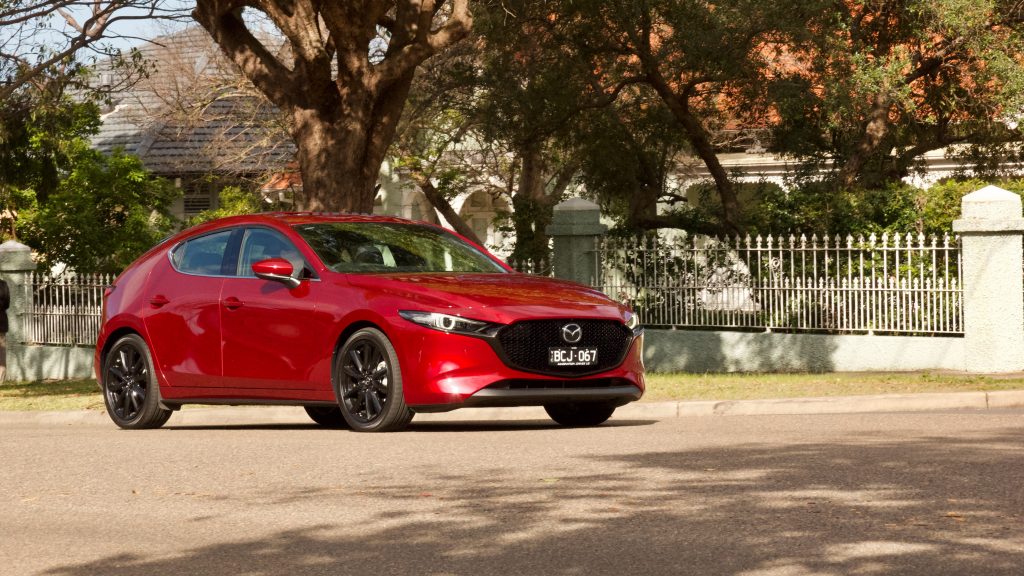
It’s not quite as successful in other areas however – its engine is old, its ride quality needs tuning and in Astina form, it’s loaded with kit but not amazing value for money. Our money would go to the lesser G25 GT, which manages the same luxury feel as the Astina but for less money. But regardless, the new Mazda3 takes the brand further into the premium sphere, and as the pioneer of several new features, it makes us even more keen for future Mazda products.
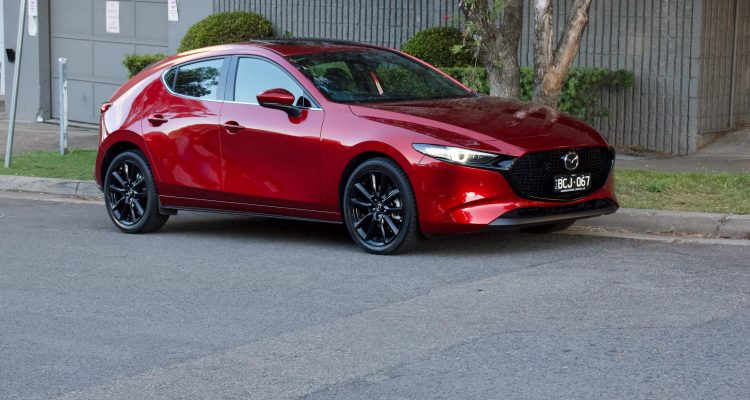
Leave a Reply